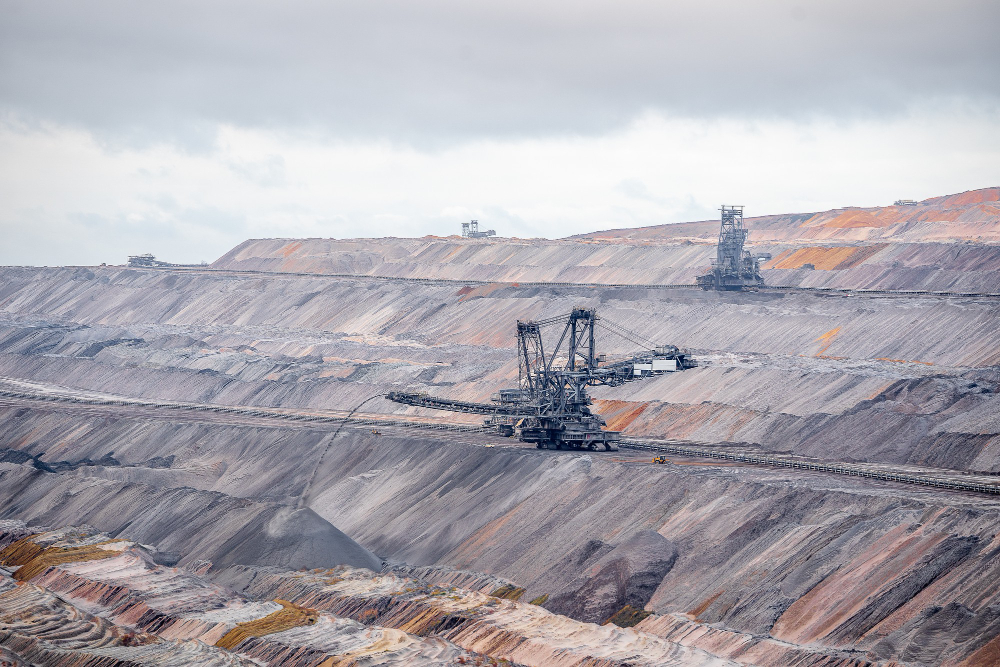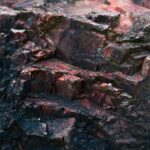Fossils, the preserved remnants of organisms that once roamed the Earth, have captivated human curiosity for centuries. These precious relics provide us with invaluable insights into the history of life on our planet. From the colossal bones of dinosaurs to the delicate imprints of prehistoric leaves, fossils come in a remarkable array of forms. But what are these fossils made of, and what materials make up the majority of fossilized remains? This article aims to delve into the diverse world of fossilized materials, exploring the composition of fossils and the fascinating processes behind their preservation.

I. The Formation of Fossils
Fossils are the tangible evidence of Earth’s ancient history. They form through intricate processes that include the burial, mineralization, and preservation of once-living organisms. To understand the majority of fossilized materials, we must first grasp the essential steps involved in fossil formation.
A. Burial
The first step in fossilization is burial. When an organism dies, it can be quickly or slowly covered by sediments. Sediments include a variety of materials such as clays, silts, sands, and organic-rich peats. These sediments are critical in the preservation process, as they protect the remains from decomposition and environmental factors that would otherwise lead to their deterioration.
B. Mineralization
Mineralization, the next crucial stage, involves the replacement of organic materials in the organism’s remains with minerals. This process occurs over thousands or millions of years and is often influenced by the chemistry of the surrounding sediments. Various minerals can be involved in this replacement process, including silica, calcium carbonate, and iron compounds.
II. Common Fossilized Materials
While fossils can be found in a wide range of materials, some substances are more commonly associated with fossilization. Understanding these materials is essential to comprehending the majority of fossilized remains.
A. Carbonate Fossils
One of the most prevalent types of fossilized materials is calcium carbonate. This compound forms the basis of carbonate fossils, which include shells, coral, and certain bones. Organisms like mollusks and corals create calcium carbonate structures during their lifetime, making these materials highly susceptible to preservation. Over time, the original organic components of these structures are gradually replaced by minerals, resulting in the beautiful and often intricate carbonate fossils we find today.
B. Silica Fossils
Silica-based fossils are another common category of fossilized materials. Organisms with hard parts made of silica, such as diatoms and radiolarians, are particularly well-preserved. Silica-based fossils are known for their fine details and intricate structures, as silica replacement tends to be precise. These fossils provide vital clues about the Earth’s past climate and environmental conditions.
C. Carbonized Fossils
Certain plant and insect fossils are predominantly composed of carbon. Carbonized fossils are formed when organic materials are compressed and heated during burial, a process that removes most of the original components, leaving behind a thin carbon film. These fossils can provide insights into ancient plant and insect life, including their structure and characteristics.
D. Petrified Wood
Petrified wood is a unique type of fossil that showcases the process of mineralization. Over millions of years, wood can transform into stone, retaining its original structure while replacing cellulose and lignin with minerals like silica and calcium carbonate. Petrified wood is valuable for understanding ancient forests, climate, and the plant life of bygone eras.
E. Bone Fossils
Bones are among the most famous and significant types of fossils, especially when it comes to the study of vertebrate animals. Bone fossils are often composed of hydroxyapatite, a mineral form of calcium phosphate, which replaces the organic components of the bone over time. These fossils provide critical information about the evolution and biology of ancient organisms.
F. Coprolites
Coprolites are fossilized excrement, and they offer a unique perspective on the diets and behaviors of ancient animals. These fossils are primarily composed of organic materials, such as undigested bones, plant matter, and other organic remains, which can give scientists insights into the ecological relationships of the past.
III. Preservation Environments
The majority of fossilized materials are preserved in specific environments that provide the necessary conditions for fossilization. These environments vary widely and play a crucial role in determining the types of materials that make up the fossils.
A. Marine Sediments
Marine environments are prolific in terms of fossilization. Calcium carbonate, as found in the shells and skeletons of marine organisms, is a common material for fossils preserved in marine sediments. These environments also contribute to the formation of silicified fossils, such as those of diatoms and sponges.
B. Freshwater Environments
Fossils preserved in freshwater environments, such as lakes and rivers, often consist of carbonized materials, particularly plant remains. The relatively low-oxygen conditions in these environments help protect organic matter from rapid decomposition. Many peat bogs, for instance, have yielded well-preserved plant fossils.
C. Terrestrial Sediments
In terrestrial environments, a wide variety of fossils can be found. Petrified wood, for example, is commonly preserved in arid or semi-arid regions with minimal vegetation decay. The composition of terrestrial fossils can vary widely, from carbonized plant remains to mineralized animal skeletons.
D. Volcanic Deposits
Volcanic deposits can yield exceptional fossils, with silica-based materials like opal often forming in volcanic ash layers. These deposits can encapsulate entire ecosystems and provide valuable information about the life forms of the time.
E. Amber
Amber, fossilized tree resin, is a unique preservation medium. It often encapsulates small organisms such as insects and spiders, which remain remarkably well-preserved due to the airtight conditions within the amber. These fossils provide a wealth of information about ancient ecosystems and the biology of the preserved organisms.
IV. The Role of Taphonomy
Taphonomy, the study of what happens to an organism’s remains from death to discovery, is a crucial factor in understanding the composition of fossilized materials. The majority of fossils are influenced by taphonomic processes that can alter the original composition of the remains.
A. Destructive Taphonomy
Destructive taphonomy processes often lead to the disintegration of organic materials in the fossilization process. Factors such as scavengers, weathering, and microbial decay can degrade the original tissues, leaving behind only the most resistant materials, like bones or shells. Consequently, the majority of fossils are composed of the toughest remnants that have withstood these destructive forces.
B. Preservative Taphonomy
Preservative taphonomy processes, on the other hand, enhance the preservation of organic materials. These can include rapid burial in anoxic (low-oxygen) environments, which reduces decay, or the presence of minerals that assist in the preservation of delicate structures. Silicification and mineralization processes often associated with fossilization are examples of preservative taphonomy.
V. Exceptional Fossilization
While the majority of fossils are composed of the materials discussed so far, some exceptional fossilization processes result in fossils of remarkable quality and detail. These exceptional fossils are often found in extraordinary circumstances.
A. Soft Tissues
One of the most remarkable discoveries in paleontology in recent years is the preservation of soft tissues in fossils. While it is relatively rare for soft tissues to be fossilized, exceptional circumstances can lead to their preservation. For instance, the fossils of the exceptionally well-preserved dinosaur Sinosauropteryx include remnants of skin and feathers.
B. Lagerstätten
Lagerstätten, or “storage places” in German, are fossil deposits that contain exceptionally well-preserved fossils. These deposits often result from unique environmental conditions that inhibit decomposition and promote mineralization. The fossils found in lagerstätten can include not only the hard parts but also soft tissues, feathers, and even stomach contents of the preserved organisms.
VI. The Significance of Fossilized Materials
Understanding the majority of fossilized materials is crucial for the fields of paleontology, geology, and evolutionary biology. Fossils provide a window into Earth’s deep past, offering insights into the history of life, climate change, and the interactions between ancient organisms and their environments.
A. Evolutionary Insights
Fossilized materials, whether they are bone, shell, or soft tissue, allow scientists to piece together the evolutionary history of life on Earth. By studying the morphology and characteristics of ancient organisms, researchers can trace the evolutionary relationships between species and observe how life has adapted to changing environmental conditions.
B. Climate and Environmental Reconstructions
Fossils are also essential for reconstructing past climates and environments. For instance, the composition of the sediments and minerals in a fossil-bearing rock layer can offer clues about the ancient landscapes and the conditions under which organisms lived. Fossils can even help us understand the ancient distribution of continents and the effects of past climate change.
C. Biodiversity and Extinction
Fossilized materials enable us to track the rise and fall of various species throughout Earth’s history. By studying the fossil record, scientists can identify periods of high biodiversity, mass extinctions, and the factors that may have contributed to these events. This knowledge is valuable for understanding the current state of biodiversity and predicting the future of life on our planet.
VII. Challenges in Fossil Study
While fossilization is a remarkable process, it is not without its challenges. Fossils are often incomplete, and their study can be influenced by biases in preservation, discovery, and interpretation.
A. Bias in Preservation
Certain types of organisms and materials are more likely to fossilize than others. For example, organisms with hard, mineralized structures like shells and bones are more commonly found as fossils, while soft-bodied organisms are less frequently preserved. This bias in preservation can lead to an incomplete and skewed view of past life.
B. Bias in Discovery
Fossils are not evenly distributed across the globe, and the likelihood of fossil discovery is influenced by factors such as geological conditions and human activity. Fossil-rich regions are more likely to yield significant finds, while less-explored areas may contain untapped paleontological treasures.
C. Interpretation Challenges
Interpreting fossils can be a complex task, especially when dealing with incomplete specimens. Researchers must rely on various scientific techniques, including comparative anatomy, geochemistry, and sedimentary analysis, to reconstruct the history and ecology of the organisms in question.
VIII. Conclusion
Fossils are windows to the past, allowing us to journey through Earth’s history and explore the lives of organisms that existed long before our time. The majority of fossilized materials are comprised of calcium carbonate, silica, carbon, and other minerals, with the composition dependent on the organisms and environments in which they lived and died. Understanding the materials and processes involved in fossilization is crucial for unlocking the secrets of our planet’s ancient ecosystems, evolutionary history, and the ever-changing climate. As technology advances and we explore new frontiers in paleontology, our knowledge of the majority of fossilized materials will continue to grow, expanding our understanding of life on Earth and the deep history of our planet.





